
The Background
While looking at some of the global south’s most populous cities, and their ever-increasing informal settlements, we proposed a roof-top extension system that would grow on top of existing structures, use natural and light-weight material like timber and would be modular in design for ease of construction.
Timber, characterized by its lightness and modularity was essential, given the inherent instability of existing structures used for expansion in these mostly informal settings. A case study of Cairo was envisioned where the city is witnessing a growth of informal settlements marked by increasing density, predominantly manifested vertically due to spatial constraints. In particular, local vernacular architecture incorporates wood in the form of pigeon towers, an integral part of the community.
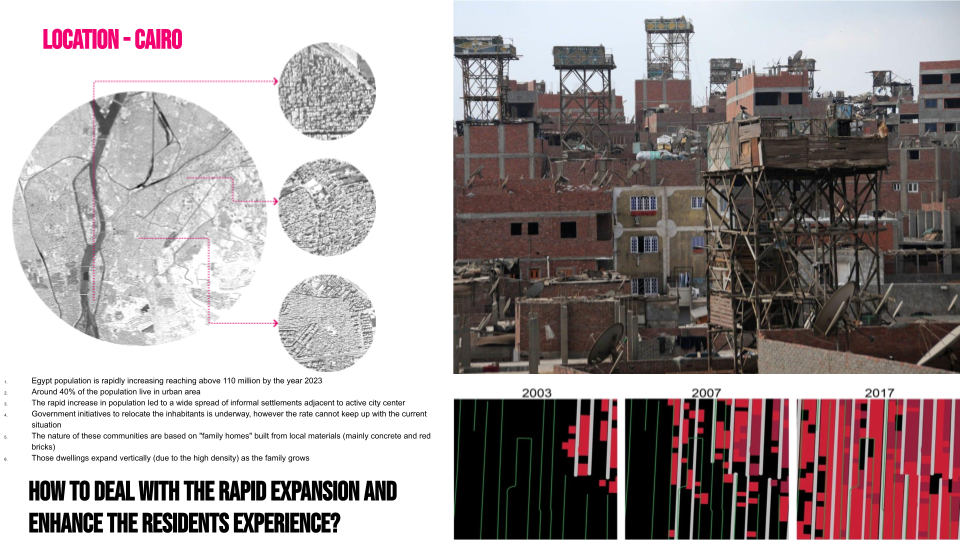
Our idea was to propose a modular timber lattice structure system that can enable these informal settlements to grow vertically on their available rooftops. Faced with the demands of rapid urban expansion, the proposal aims to improve the residents’ experience through a programmatic approach that is adaptable to evolving needs.
The materiality and technique allow this process to be user-driven, indigenous and consequently financially sustainable. This system will allow squatter settlements in megacities to formalise their growth, improve their lifestyle, and ensure safety in their domestic construction. It would also help local and small vendor economies by sourcing local products and materials to form different types of panels for privacy and protection reasons.
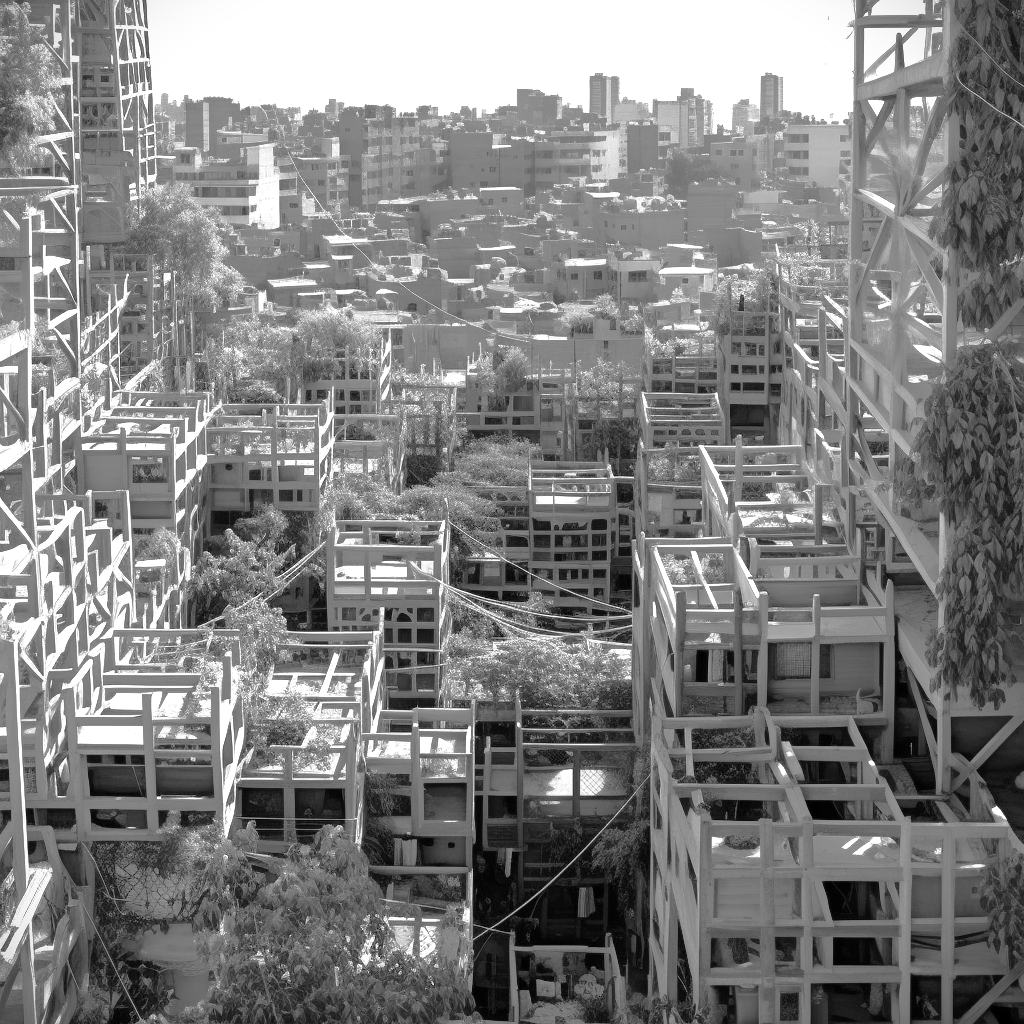
Roof Squared – the Web App
Roof Squared is a web app designed to make our idea accessible to creative thinkers, designers and regulators alike. The idea of the app was to make this proposal accessible both visually and in terms of the data to help catalyse these urban agendas and equip decision-makers to make more informed, data-driven decisions.
so, What does the App do?
- The App takes a geometry input, a 3dm file, of closed polylines, representing building footprints.
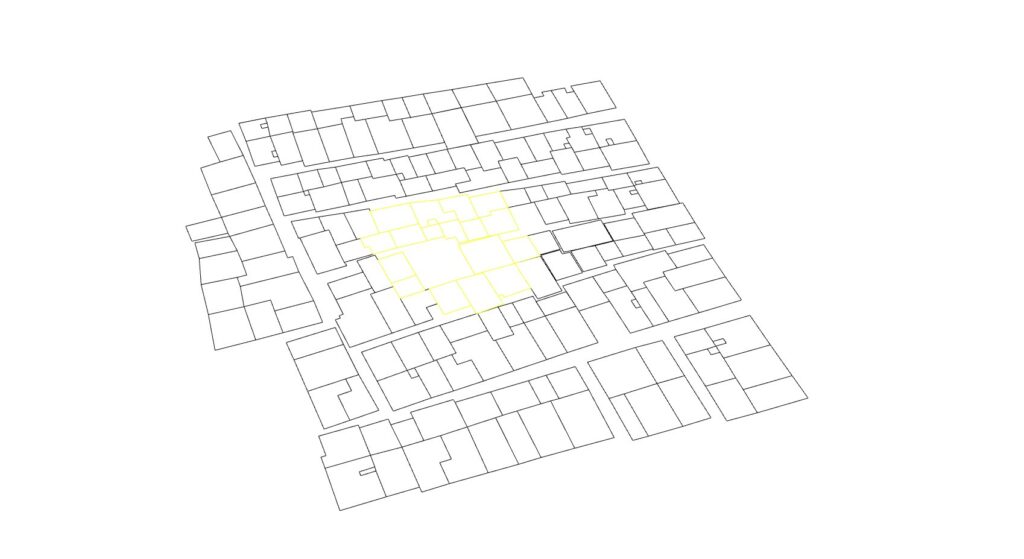
2. It then sends it to the Rhino.Compute Server where the grasshopper script kicks in to compute the lattice structures. The grasshopper script does the following important computations in its workflow:

- It classifies the rooftops, based on their available areas, into different programs; Residential Extensions, Communal Rooftops and the Pigeon/ Observation Towers.
- Based on their footprint areas, it represents the existing building height and mass. This is purely indicative.
- Based on a certain point in the development (average middle point) it computes a growth pattern based on an urban program ratio. i.e. for every 07 residential units it will find the first communal rooftop, and for every 12 residential units it will pick one tower rooftop. In this way, the stakeholders can envision a procedural growth and phasing of these extensions.

4. It then processes a voxelization of the obtained rooftop extension volumes. (for this particular app, an array of box meshes was created instead of using the voxels plugin). Here the user can control the size of these modules. The default value is 2x2x2m.
5. The voxels are then processed into the lattice structures, given the thicknesses to generate the volume of timber estimated for the said development.
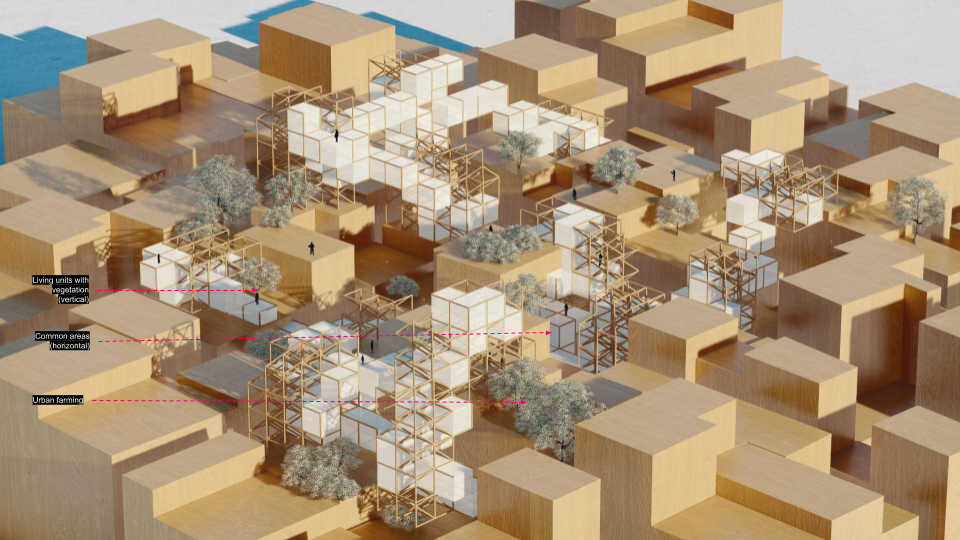
and, How does it work?
The app deploys Vue.js script to bind all the components and run the Rhino.Compute on the IAAC server on instruction. The webpage is designed for ease of use and easy accessibility. The Inputs Interface is stacked on the left bar to allow for a maximum clear view of the geometry on the rest of the screen. The input interface is show below:
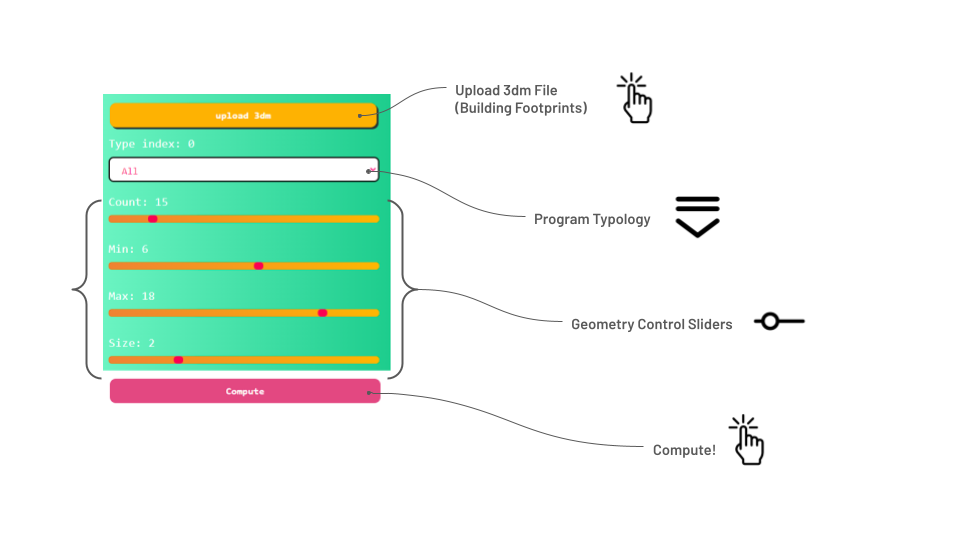
Here’s a small video demonstration how the app functions:

